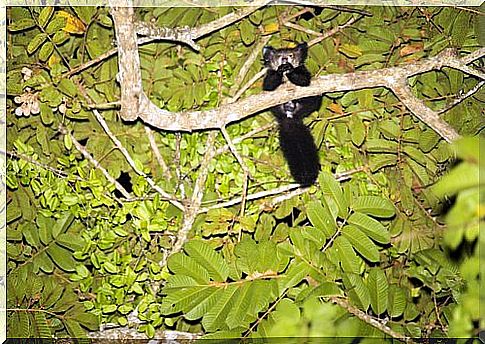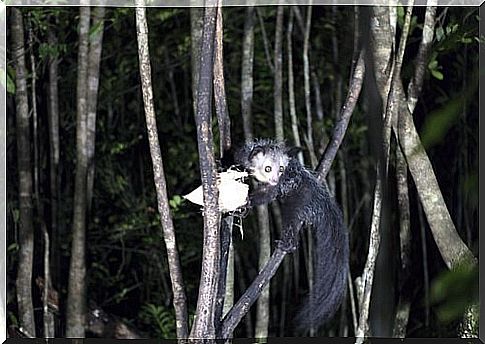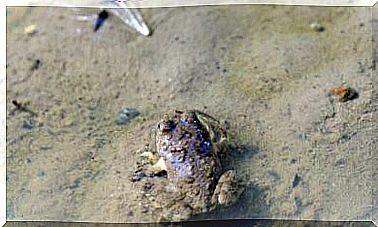Do You Know Aie-aie?

The aye-aye is a curious species of mammal endemic to the island of Madagascar. It is currently in danger of extinction, an unfortunate reason why it has gained greater visibility around the world. Next, we will learn more about its main characteristics, habitat, food and reproduction.
Molecular characteristics and taxonomy of the aye-aye
The aye-aye ( Daubentonia madagascariensis ) is a species of primate related to lemurs. It is a rare animal and, to this day, it is the only living representative of its species ( Daubentonia ). The other species close to the aye-aye became extinct about a thousand years ago and was known as the giant aye-aye.
Such is its rarity that, when discovered by scientists, it was cataloged as a “strange squirrel”.
However, the morphological features they share with the Strepsirrhini suggest that this is a very primitive primate species.
Main morphological aspects
The aye-aye is medium in size and reaches a body length similar to that of an adult house cat. Its body measures approximately 40 centimeters, and the tail can reach about 15 centimeters.
Its body weight is quite light compared to its size, which hardly exceeds three kilos. This allows these mammals to move quickly and easily escape their predators.
The most striking morphological features are the wide, rounded ears at the tips, and the large yellow, slightly bulging eyes.
The latter are a typical feature of nocturnal animals, which thus enjoy better vision in the absence of natural light.

Its legs are short and have a strange appearance: they are formed with phalanges or thin, long fingers. The fingers of the hands or forefeet also reveal sharp and pointed claws.
Interestingly, the aye-aye has the longest and thinnest third toe, because it uses it to dig for insects to eat.
It is also known that this third phalanx is very sensitive to vibrations and its temperature rises while the aye-aye looks for its food.
Habits and feeding of the aye-aye
The aye-aye are arboreal animals – they mostly live in trees – that maintain nocturnal habits . Its diet is omnivorous and is based mainly on the consumption of insects or larvae.
However, they also tend to eat some fruits and seeds to meet their nutritional needs.
As we can see, your third longest and thinnest finger plays an essential role in your diet. The aye-aye uses this finger to tap the bark of trees, something similar to what the woodpecker does with its beak. But among mammals, lemurs are the only ones who have developed this ability.
Getting a small hole in its trunk, the aye-aye inserts its finger inside to look for insects, larvae or worms.
The sensitivity of your third finger to vibrations allows the aye-aye to know precisely the location of its prey within the tree.
In this technique, the animal also uses its powerful hearing to know where there is a small hole under the bark. The hollow sound indicates that the wood has been eaten from the inside by larvae or insects.

Habitat and reproduction of the aye-aye
As mentioned in the introduction, the aie-aie is a native and endemic species to the island of Madagascar, on the African continent.
Currently, there are about 2.5 thousand copies, distributed throughout the African island, with a slight tendency to be concentrated in the eastern area.
In its habitat, the aye-aye can breed throughout the year, which means that it does not have a specific breeding season.
One sign that females are receptive is that they agree to be with males 24 hours a day.
While some specimens of the aie-aie can be quite sociable, this day and night coexistence between females and males only occurs during reproduction.
Males, on the other hand, are aggressive towards each other, so they can participate in deadly fights.
At each gestation, females give birth to only one offspring, which they will take care of until it can survive on its own.
Generally, females only accept mating again after two or three years of their last pregnancy.
The life expectancy of the aie-aie is calculated between 20 and 23 years, in optimal conditions for its development. For this, we must take into account its main predators, including humans.









